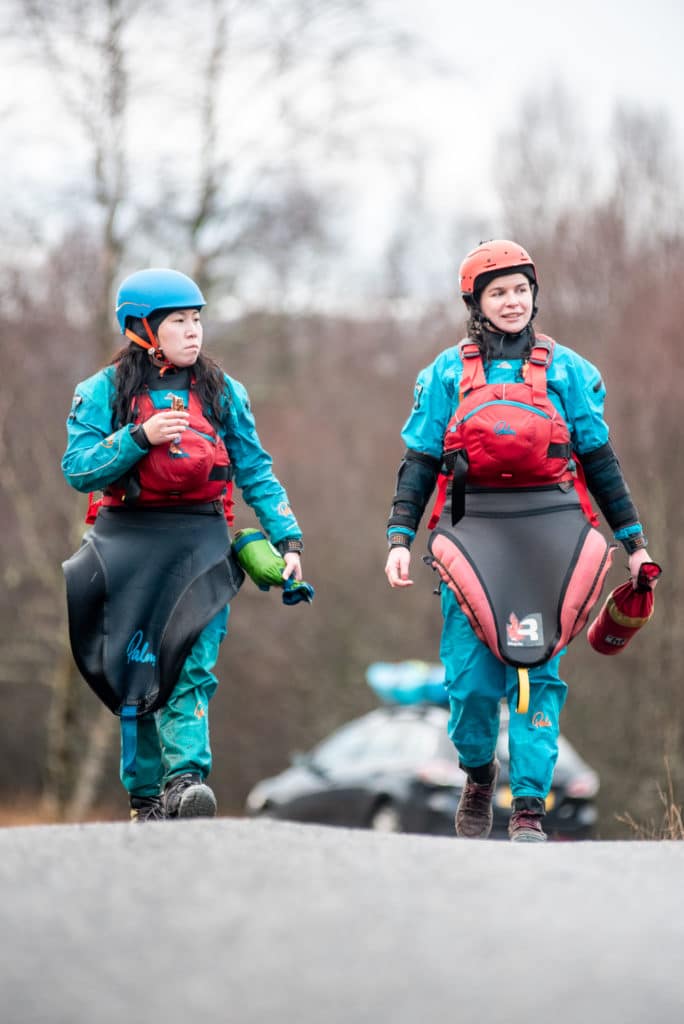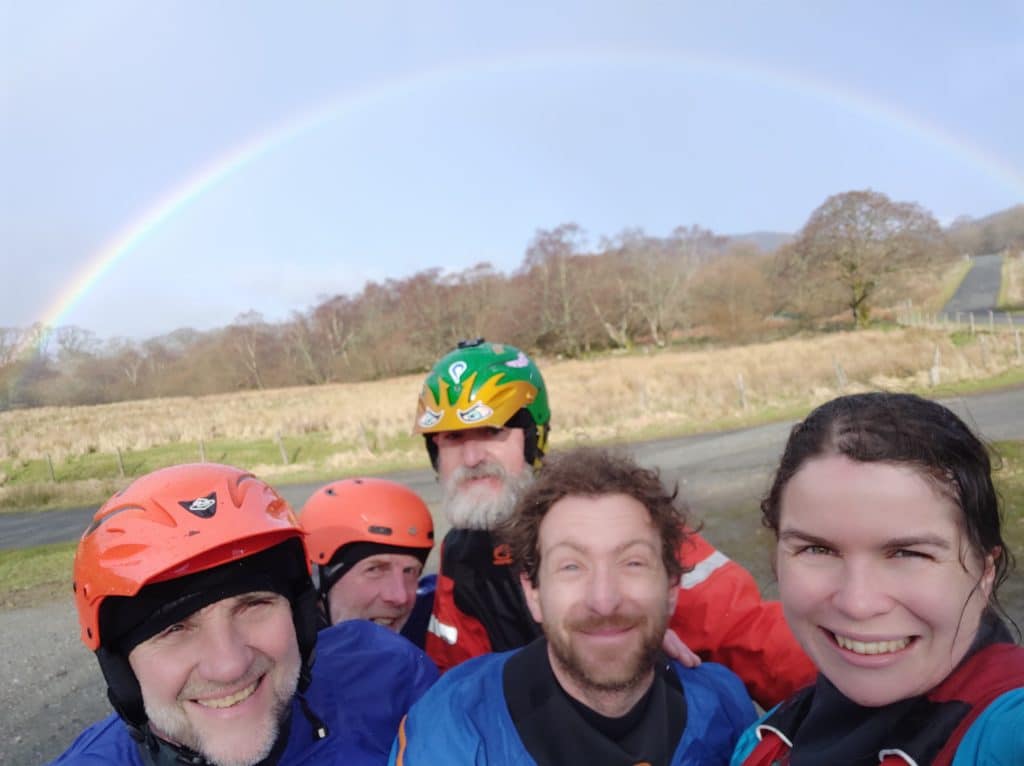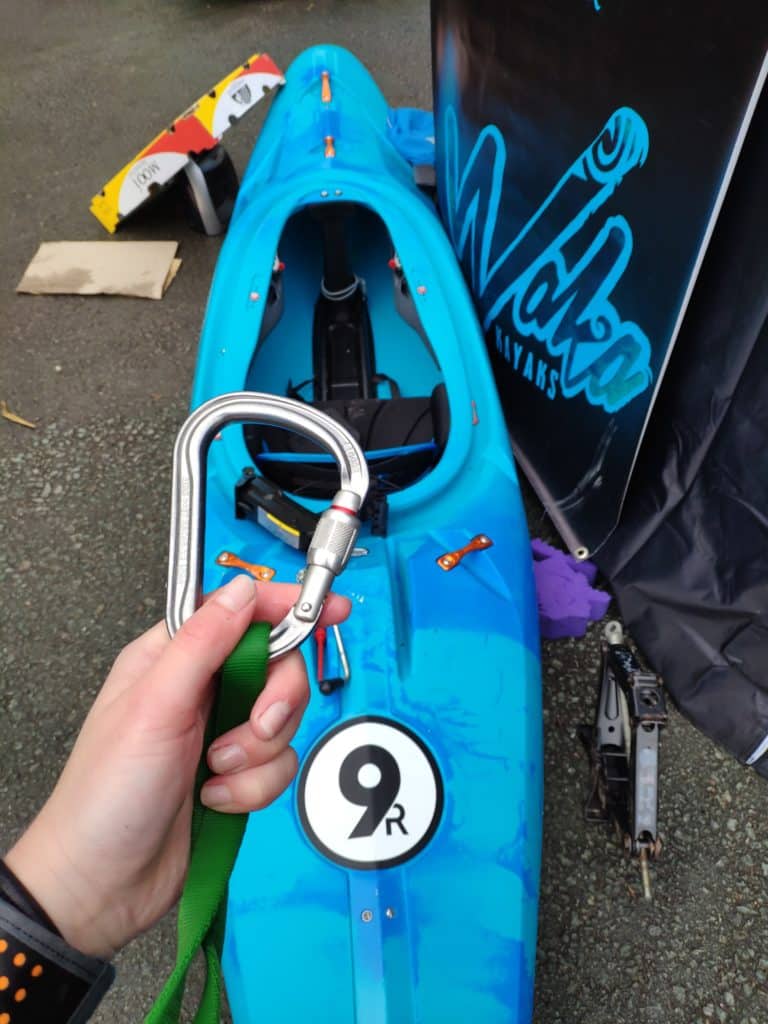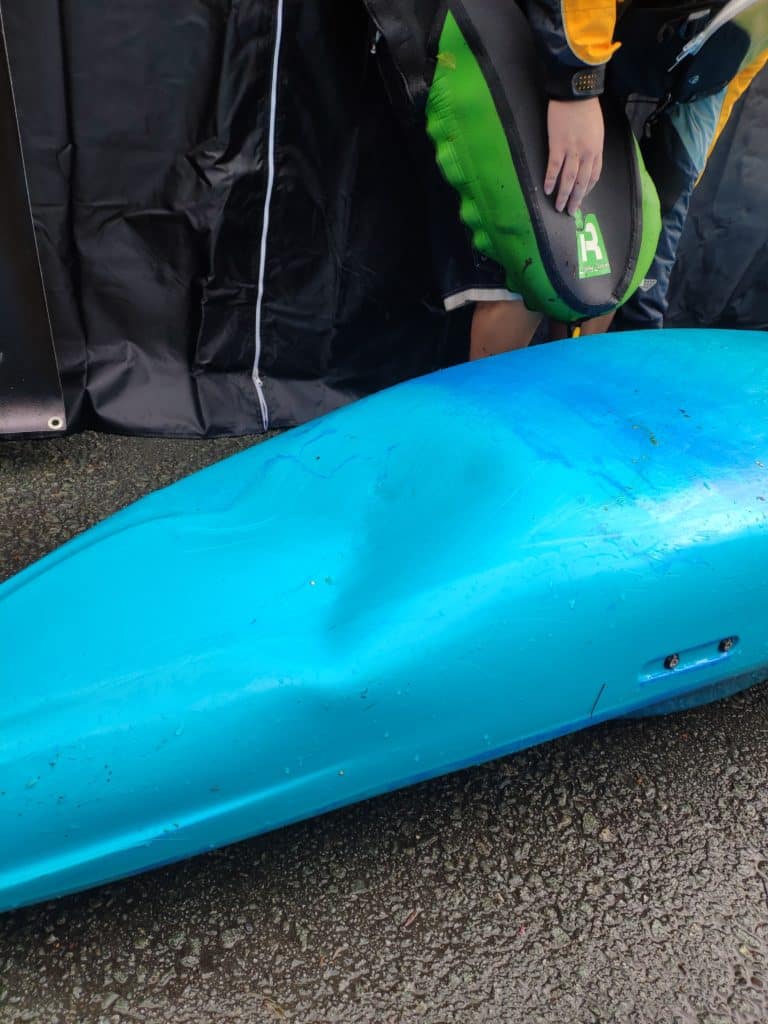A goal that I believe many kayakers have is one to become an ‘independent boater’. Let me explain what I mean by that phrase. When someone starts off in kayaking, it is often through a club. They are reliant on those more experienced than them to organise and lead trips of which they are invited on. It can be hard to move away from this structured system and become someone who goes kayaking when they want, where they want and with who they want. Whilst many people would like to achieve this independence, they may not feel confident enough in their own knowledge and experience to make this transition. As someone who has largely moved away from club boating and more towards peer paddling, I was considering the steps needed in order to achieve this. I came up with three main steps or sub-goals and am going to dedicate a blog piece to each of them. In this piece, I am going to look at safety and specifically the journey to becoming safe in a kayaking environment.
What this piece is not about is learning specific safety skills. There are many well written articles on this topic by people with far more expertise than me. Chris Brain’s Safety and Rescue Essentials for example covers everything you ever needed to know about safety from a coach. Instead what I want to discuss is the journey to becoming safe that everyone goes through as a kayaker.
Doing a course
A kayaker’s safety skill set tends to come from two places; formal training and experience. I would argue that both are equally important and having only one of these things has the potential to hold you back. You can be an experienced kayaker who has learnt about safety through their peers but without any formal training for safety, you risk missing out on knowing something that could be very useful for you. Equally you could do all of the safety courses available but without the experience of practicing the skills you learn, you may find yourself lacking confidence when carrying out safety in a real environment.

I have completed two courses specifically aimed at safety on white water. The first was a White Water Safety & Rescue (WWSR) course carried out early on in my paddling days with New Wave Kayaking. At the time, I chose to do this course as I was beginning to go on kayaking trips where I was peer paddling instead of being led. I had a new awareness of being someone who needed to work as part of a team on the river as opposed to someone who needed to be looked after. The most useful thing I found from my WWSR was the discussion about group dynamics and considering this in the environment you are in. It changed my perspective that safety was about rescuing people and more about preventing a rescue from being needed in the first place. Whilst many of the more technical skills I forgot over time, this preventative approach to safety is something that has stuck with me. I would thoroughly recommend to anyone who kayaks, whatever the grade, to invest in going on a WWSR. Many clubs organise these for their members but providers will allow individuals to book onto their courses as well. So if you haven’t done one before – sign up!
The second course, which I completed quite recently, was an Advanced White Water Safety & Rescue (AdWWSR) with Getafix. When I chose to sign up for this I had gained a lot of personal experience and so attended the course with a different outlook than when I had attended my WWSR. The technical skills we went over during the weekend were now more relevant as I could relate them to my own personal experiences. The course added and refreshed ‘tools’ that I had in my ‘safety tool kit’. It also helped to reassure me about my own current skills. I particularly enjoyed the scenarios we took part in as they allowed me to reflect on similar situations I had been involved with. Part of being safe is trusting yourself with the decisions that you make and in your own abilities. Through attending these two courses, it definitely increased my confidence in my own abilities.

Gaining experience
Experience is fundamental for becoming confident in your safety skills. In my early kayaking days, safety to me meant that someone stood at the end of a rapid with a throw line, ready to fish us beginners out. The places I would swim seemed fairly inconsequential – HPP and a few grade 2 rapids on club trips. It was only as I improved that I began to consider safety in a completely different way. For me safety in kayaking should be an implicit part of it. Safety is something that should help inform your decision making, from the river you choose to run, the order in which you paddle, the rapids you choose to scout and the lines you choose to take. Safety for me is about good decision making, with the aim to avoid getting into a rescue situation but prepared if it is needed. It should also be about ensuring that everyone is still having fun. You can be safe whilst also being calm and relaxed on a river. And if this isn’t the case, perhaps the water you are paddling may be a bit pushy for the group’s abilities.

Safety is also having the ability to stay calm in a stressful situation on the water. Last year, my partner and I went for a chilled day kayaking at the Tryweryn. We are both very familiar with the Tryweryn and the water difficulty is well within our abilities. As such, we will often spend Summer days there either as a pair of with friends. One such day I was waiting for him to follow me down a drop but he seemed to be having difficulty. I jumped out of my boat and go up to check if he is okay only to find that he had got completely pinned and was unable to get out. The force of the water was causing the boat to bend and swimming would have made things worse. However within 10 seconds I’ve got my sling out of my BA and it is attached to him. I am able to pull on him enough to allow us to lever him out of the pin. He paddles into the eddy below and walks out completely okay. We weren’t set up for safety that day in the way that you might think of. We hadn’t stood at the end of each rapid, waiting for each other with a throw line. But we were aware of each other on the water and had the equipment and experience to deal with the situation when it arose. In other words, we were safe.

If you can make safe decisions for yourself, whilst also looking out for the other paddlers in your group then you have most likely achieved being able to independently do safety. And that is the first key step to becoming an independent boater.
Wait for next week to find out step two!

6 replies on “Why being safe is the first step to becoming an ‘independent boater’”
[…] need to be led down the river. I looked at safety in the my last piece and you can read it here. This week is all about picking your own lines and why this is so important in being able to move […]
[…] I outlined each step in a separate blog piece. My first piece was on the importance of being safe. My second piece was on the importance of being able to choose your own lines. My third and final […]
[…] little while ago I wrote three articles about to how to become an ‘independent boater’. These articles focused […]
[…] Do you check on the person behind you whilst paddling and make sure to pass river signals on clearly? If the spot where you are entering/exiting your kayak is tricky, do you offer to hold the next person’s boat for them to give them a bit of stability as they get in/out? Someone who shows they are a safe and considerate paddler is much more likely to be asked to paddle again. You can read more about being a safe paddler here. […]
[…] Do you check on the person behind you whilst paddling and make sure to pass river signals on clearly? If the spot where you are entering/exiting your kayak is tricky, do you offer to hold the next person’s boat to give them stability as they get in/out? Someone who shows they are a safe and considerate paddler will likely be asked to paddle again. You can read more about being a safe paddler: https://delkayaks.co.uk/2020/05/25/why-being-safe-is-the-first-step-to-becoming-an-independent-boate… […]
[…] If you want to read more – click here! […]